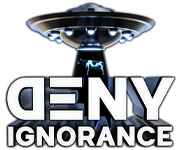
+- Deny Ignorance (https://denyignorance.com)
+-- Forum: Science, Mystery, & Paranormal (https://denyignorance.com/Section-Science-Mystery-Paranormal)
+--- Forum: Fragile Earth (https://denyignorance.com/Section-Fragile-Earth)
+--- Thread: Remember the fuss about PCBs in the 70's and 80's? (/Thread-Remember-the-fuss-about-PCBs-in-the-70-s-and-80-s)
Remember the fuss about PCBs in the 70's and 80's? - Maxmars - 03-23-2024
From ChemistryWorld: ‘Everyone thinks it’s a thing of the past’: PCB pollution may be worse now than before they were banned
Levels of toxic polychlorinated biphenyls (PCBs) released into the environment could be higher now than they were during peak production in the 1970s. Despite being banned for over 40 years, new estimates suggest that significant amounts of these carcinogenic chemicals are inadvertently being formed as byproducts of other chemical processes.
Apparently, while adhering to the letter of the law, they forgot its' spirit. Rather than regulate and measure all PCB types (there are some 200+) the wise management of government oversight only measures for PCBs that were in use 40 years ago. They get to show 'progress' as people finally stopped using them, but no one ever seemed to bother with any other types.
Of course, there's a theory that some of the 'new' unmeasured PCBs in the environment are actually "unintentionally" created as byproducts of other processes. Because we know the industry would have been completely robust in their accounting of any PCB's they produce and inject onto the atmosphere.
‘We banned this chemical, everyone thinks it’s a thing of the past … but they’re only measuring the dominant PCBs in the old commercial mixtures, so of course they’re going down because we’ve not been using [them] for 40 years, but all these other ones may have been going up, and we have been completely blind to this,’ explains Megson. ‘I’m hoping this research is going to stimulate people to go out and start looking at a variety of different chlorinated solvents and products to identify the true scale of this issue.’
...
Keri also agreed that categorising byproduct PCBs as emerging contaminants of concern would ‘draw attention’ to the ways that PCBs have been ‘ignored’ in the past and ‘force’ industry to remove them. ‘The authors point out that many studies are done with indicator PCBs instead of measuring all 209 PCBs. Many studies only measure a small number and that results in not measuring these byproduct PCBs at all. Many studies that do that miss this story entirely.’.
I remember when environmentalists were relentlessly active about this known threat to the environment, and the rest of us too.
